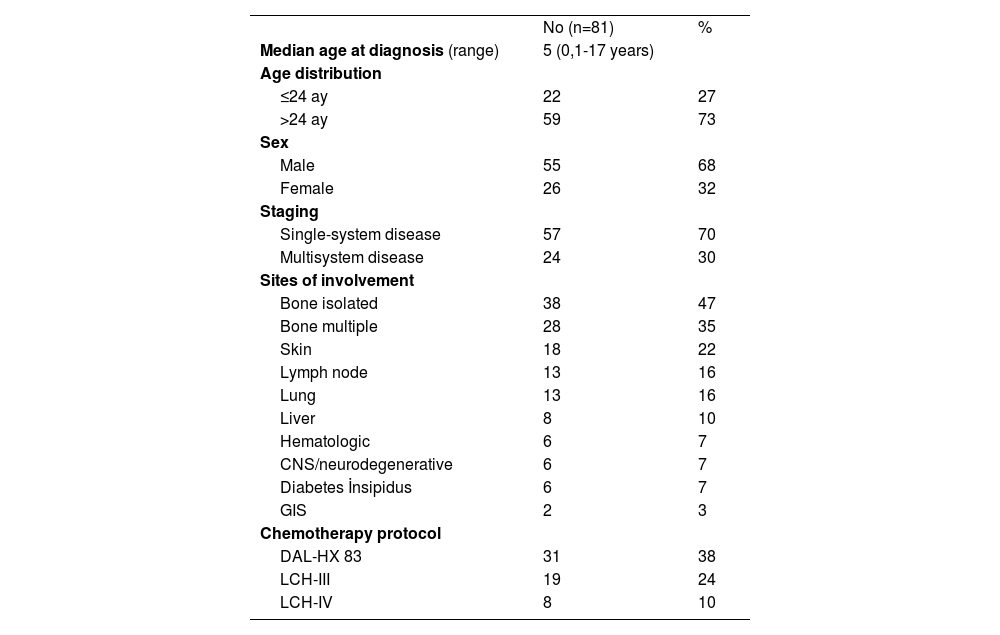
XIV Eurasian Hematology Oncology Congress
More infoLangerhans-Cell Histiocytosis, the most common histiocytic disorder, is characterized by inflammatory lesions with infiltrating CD1a+/CD207+ pathologic dendritic cells. The extent of disease is highly variable, from single lesion disease to life-threatening disseminated multisystem disease. We aimed to determine the demographic characteristics and the clinical outcomes of children with LCH.
MethodologyThe files of 81 patients diagnosed with LCH in Ankara Oncology Hospital, Dışkapı Children's Hospital and Ankara City Hospital between 1993 and 2023 were retrospectively analyzed. Data collected from the files included characteristics, age, sex, symptoms, physical examination findings, site of involvement, laboratory findings at diagnosis, procedure applied, treatment type used, and outcome.
ResultsThe median age was 5 (0.1-17) with a median follow-up of 3 years (0.1-14) (Table1). The most common complaint was a bone lesion-related symptom; swelling (31%), pain (19%). Surgery was the only treatment in 19, chemotherapy in 22, radiotherapy in 1, surgery + chemotherapy in 35 (43%). Vinblastine + prednisolone was most commonly (36%) used. A patient with BRAF600VE was treated with vemurafenib. Recurrence was detected in 13 (16%) patients. Three patients died (3.7%) with refractory disease.
ConclusionBone and skin were the most frequently involved systems in our study. Prognostic factors affecting event-free survival (EFS) were multisystem disease (5-year EFS 62% versus 87%, p=0.01) and hematologic system involvement (5-year EFS 42% versus 82%, p=0.02). Consistent with the literature, our overall survival (OS) rate was found to be high (5-year OS 95%). Patients with single-system disease had excellent survival (100%).







